If you encounter any issues with performing a rewrite of the following text, please respond with the error message: Unable to process the request due to encountered difficulties.
Lemon trees offer more than just delicious citrus fruits – their beautiful dark green leaves and delightful flowers also make them a valuable ornamental choice. These trees can thrive in zones 8 to 11, showing their resilience.
Pairing the lemon tree with other companion plants lets you take advantage of the space under and around the tree’s dripline as well as promote symbiotic relationships among the plants for mutual benefits.
Edible Companion Plants
Since the lemon tree is both an ornamental as well as a fruit-bearing tree, you can pair it with both edible and ornamental companion plants. The following are the top edible plants that do well with the lemon tree.
1. Parsley
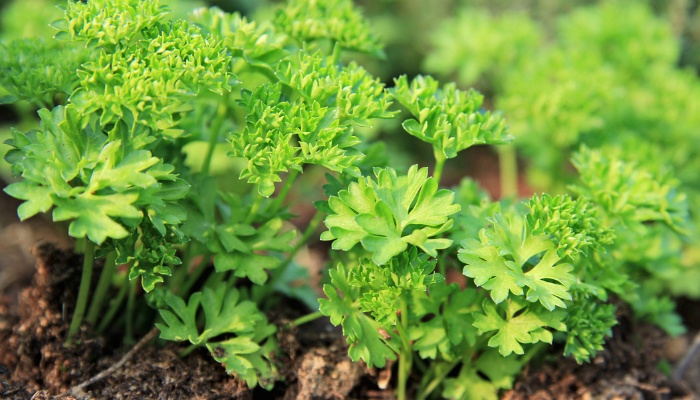
Parsley is a flowering herb native to the Mediterranean region that is easy to grow. Its fragrant leaves repel pests, and its flowers attract pollinators. The herb has many culinary uses as a garnish, in cooking, and in salads.
- Key benefits: Repels pests, attracts pollinators
- Light requirements: Full sun
- Average size: 9-12 inches tall, 9-12 inches wide
2. Basil

Basil is a herb with many cultivars including Thai basil and sweet basil. The leaves and flowers are a staple in many cuisines. The seeds are the source of many beverages in Asia. The herb is a natural insecticide against pests such as mosquitoes.
- Key benefits: Insecticide, culinary uses
- Light requirements: Full sun
- Average size: 18-24 inches tall and wide
3. Dill
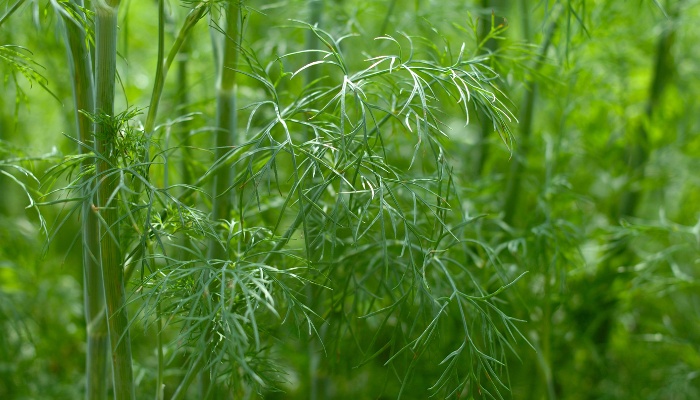
Native to North Africa, this annual herb has been used widely in European and Asian cuisines both fresh and dried. Oil from the seeds sometimes is used when making soap. It’s also part of traditional medicine in India.
Try to plant dill on the outskirts of the lemon tree as it will not grow as well in the shade.
- Key benefits: Attracts pollinators
- Light requirements: Full sun
- Average size: 3-5 feet tall, 2-3 feet wide
4. Fennel

The hardy fennel is a perennial herb in the carrot family. The feathery leaves have strong aromas that make fennel one of the ingredients of absinthe. Clusters of yellow blooms attract pollinators in the spring.
- Key benefits: Attracts pollinators, culinary uses
- Light requirements: Full sun
- Average size: 4-6 feet tall, 1.5-3 feet wide
5. Oregano
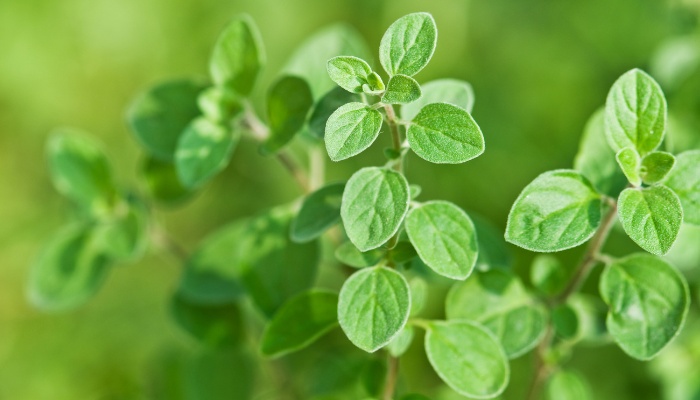
A member of the mint family, oregano is a flowering herb is native to the Mediterranean. The rich flavors of the dried leaves make it ideal in many recipes. Oil extracted from oregano leaves has been used in traditional medicines.
- Key benefits: Culinary uses, medicinal properties
- Light requirements: Full sun
- Average size: 1-2 feet tall, 1.5 feet wide
6. Lemon Balm

Lemon balm is another herb in the mint family. The leaves are used to make flavorful tea, and the fragrant flowers attract bees with their nectar. Essential oil from the herb is used for massages, stress relief, digestion, and many other ailments.
- Key benefits: Attracts pollinators, culinary uses
- Light requirements: Full sun, partial shade
- Average size: 1.5-2 feet tall, 1.5-3 feet wide
7. Thyme
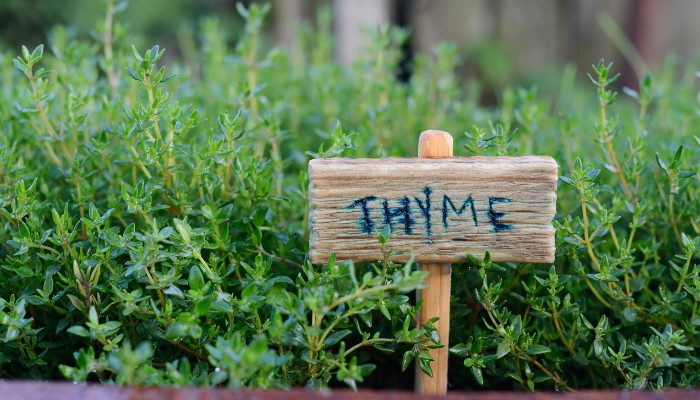
A close relative of oregano, thyme is widely used in various recipes and historically has been a staple in traditional medicines in the Mediterranean region. Thyme oil has antimicrobial benefits.
- Key benefits: Helps repel pests, attracts beneficial insects
- Light requirements: Full sun
- Average size: 6-12 inches tall, 6-12 inches spread
8. Nasturtiums
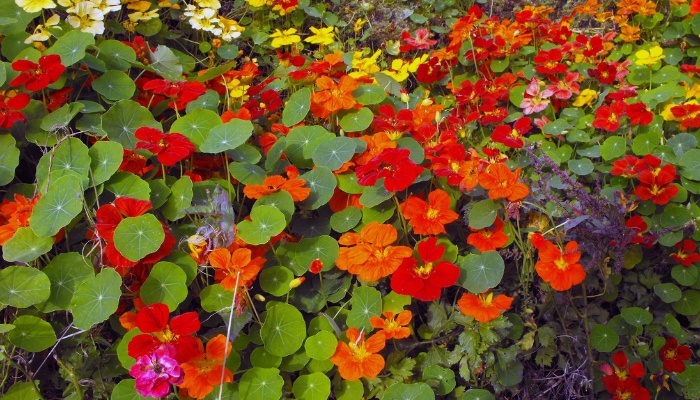
Nasturtium is a versatile plant with many uses. Its blooms have food and ornamental values while at the same time attracting aphids and other pests. Pairing nasturtiums with lemon trees protects the trees against these pests.
- Key benefits: Ornamental benefits, pest trapping
- Light requirements: Full sun
- Average size: 12-18 inches tall, 1-2 feet wide
9. Mint
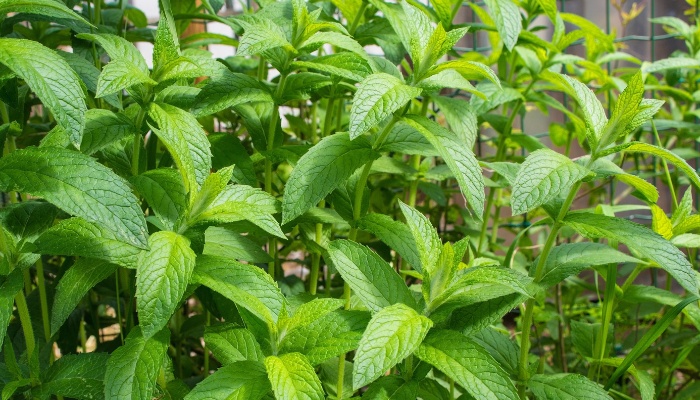
Mint is one of the oldest and most popular perennial herbs in Europe, Asia, and North Africa. The leaves are used in dishes and in making tea both fresh and dried. Medicinally, it was used to treat stomach aches, irritable bowel syndrome, and chest pains.
Be sure that keep mint in check throughout the growing season as it will quickly spread and choke out other vegetation.
- Key benefits: Culinary and medicinal benefits
- Light requirements: Full sun, partial shade
- Average size: 12-18 inches tall, 18-24 inches wide
10. Borage
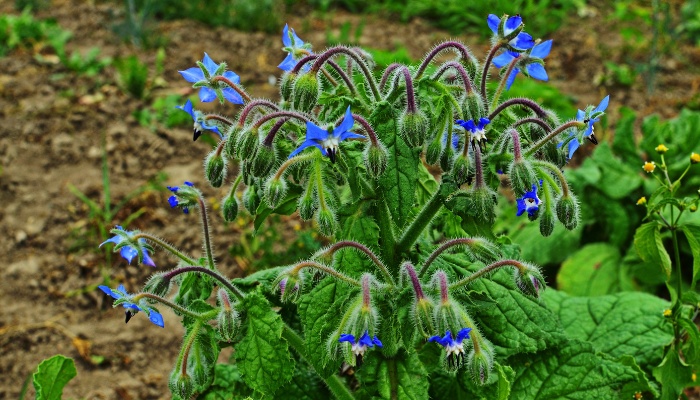
Borage is an annual herb with jaw-dropping star-shaped flowers. It’s used as a vegetable across Europe and in Italy; the leaves are used as a stuffing for ravioli pasta. Oil from borage seeds is used as a dietary supplement.
- Key benefits: Culinary uses, repels pests
- Light requirements: Full sun, partial shade
- Average size: 1-3 feet tall, 9-18 inches wide
11. Yarrow
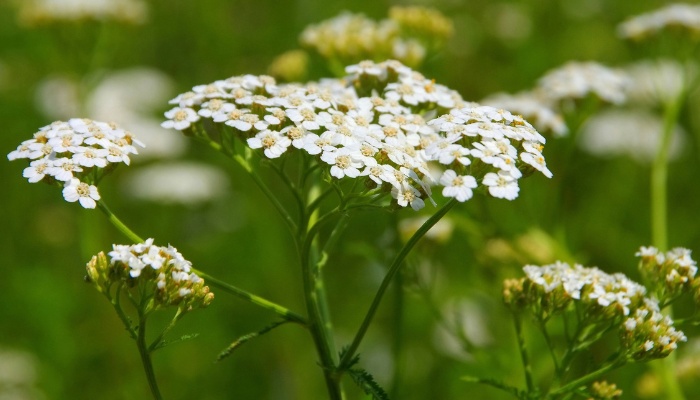
Yarrow is an edible plant packed with nutrients. In some parts of the world, it’s grown to feed livestock. Its leaves have a mild laxative, and the plant has other medicinal uses.
- Key benefits: Attracts pollinators, repels pests
- Light requirements: Full sun
- Average size: 2-3 feet tall, 2-3 feet wide
12. Alliums
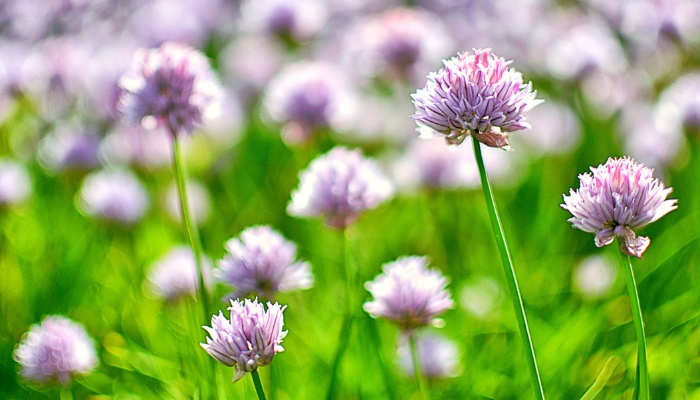
Allium is a genus that covers a wide variety of plants, but for many gardeners, the term often refers to ornamental onions.
They’re cousins of the common onion but with larger, flashier flower heads.
- Key benefits: Ornamental value, huge variety of species
- Light requirements: Full sun, partial shade
- Average size: 1-4 feet tall, 3-10 inches wide
13. Bee Balm
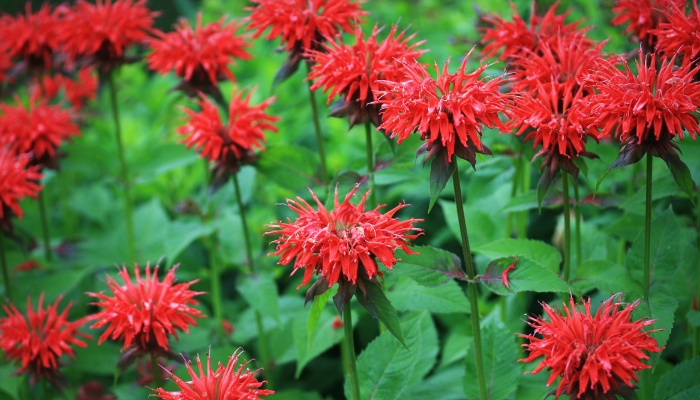
Native to North America, bee balm is a flowering plant in the mint family. The fragrant leaves with their faint scents make excellent teas. The essential oil extracted from the leaves treats skin conditions and sore throats.
- Key benefits: Medicinal properties, tea, attracts pollinators
- Light requirements: Full sun, partial shade
- Average size: 10-48 inches tall, 10-36 inches wide
14. Feverfew

Feverfew is a herbaceous perennial with flowers similar to daisies, but the plant has pungent-smelling leaves that makes it ideal for traditional medicines. It is also used as a dietary supplement.
- Key benefits: Ornamental flowers, repels pests, attracts pollinators
- Light requirements: Full sun, partial shade
- Average size: 1-3 feet tall and wide
15. Legumes

When we say legumes, we are talking about a wide variety of plants that include beans and peas among others.
Most of these legumes are nitrogen fixers. That means they enrich the soil with nitrogen, which is an essential nutrient for plants. Lemon trees would benefit from the extra nitrogen in the soil.
- Key benefits: Enrich the soil with nitrogen
- Light requirements: Full sun
- Average size: 1-3 feet or more depending on the plant
16. Hyssop

Hyssop is a herb with a lot of medicinal properties. It’s used to treat indigestion, bloating, poor blood circulation, skin conditions, and problems with the respiratory system. The aromatic herb is also grown for its ornamental leaves and flowers.
- Key benefits: Medicinal properties, attracts pollinators, repels pests
- Light requirements: Full sun
- Average size: 2-4 feet tall, 1-3 feet wide
Ornamental Companion Plants
Ornamental plants, especially those that flower, generally need full sun. You can plant them around the lemon tree to attract pollinators such as butterflies and bees and good bugs that feed on pests such as ladybugs and wasps.
1. Marigolds

The flowering marigolds are cheerful plants that brighten the garden with their blooms. Their main purpose is as ornamental plants.
- Key benefits: Ornamental value, repels many pests
- Light requirements: Full sun
- Average size: 4-48 inches tall, 6-24 inches wide
- Bloom time: Summer
2. Petunias

It’s hard to find a gardener that hasn’t grown petunias at some point. They come in a wide variety of colorful blooms.
- Key benefits: Ornamental, attracts some pollinators
- Light requirements: Full sun
- Average size: 6-24 inches tall, 6-36 inches wide
- Bloom time: Spring, summer, fall
3. Sunflowers
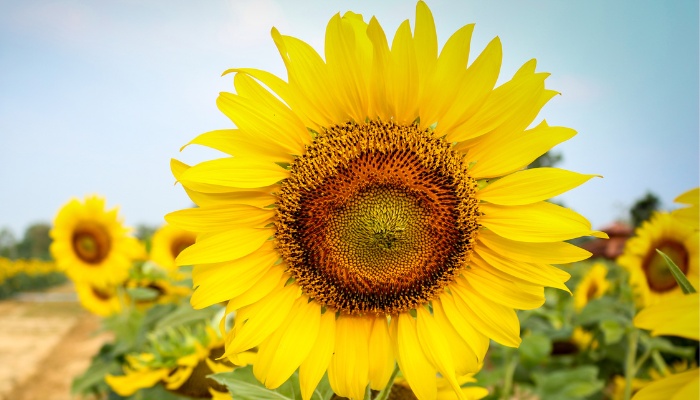
Sunflowers have large blooms in a variety of colors that follow the sun across the sky. They also provide nutritious seeds where sunflower oil is extracted. There are numerous varieties from which to choose.
- Key benefits: Ornamental flowers, attracts beneficial insects and pollinators
- Light requirements: Full sun
- Average size: 3-10 feet tall, 1.5-3 feet wide
- Bloom time: Summer, fall
4. Impatiens

These flowering plants have about 1,000 known species. They can tolerate partial shade, so growing them under the lemon tree won’t hurt them.
- Key benefits: Ornamental value, attracts butterflies and hummingbirds
- Light requirements: Filtered sun and partial shade
- Average size: 6-36 inches tall; 1-3 feet wide
- Bloom time: Spring, summer
5. Zinnias

Zinnias are ornamental plants with flowers that come in yellow, pink, orange, red, and bicolor. They’re ideal for borders and as potted plants. They create an oasis of color around the lemon tree and have a long bloom season.
- Key benefits: Ornamental value, attracts pollinators
- Light requirements: Full sun
- Average size: 1-4 feet tall, 6-18 inches wide
- Bloom time: Spring, summer, fall
6. Daisies

Daisies are the darlings of any flower bed. Their cheerful blooms are easy to identify, and they attract bees and other pollinators.
- Key benefits: Ornamental, attract pollinators
- Light requirements: Full sun, partial shade
- Average size: 9 inches to 3 feet tall, 1-2 feet wide
- Bloom time: Spring, summer
7. Lantana

Lantana is a flowering plant with highly ornamental blooms. If you’re looking for carefree color all season long, this is an excellent choice.
- Key benefits: Ornamental, attracts good bugs
- Light requirements: Full sun
- Average size: 6 feet high and wide
- Bloom time: Spring-fall
8. Bottlebrush
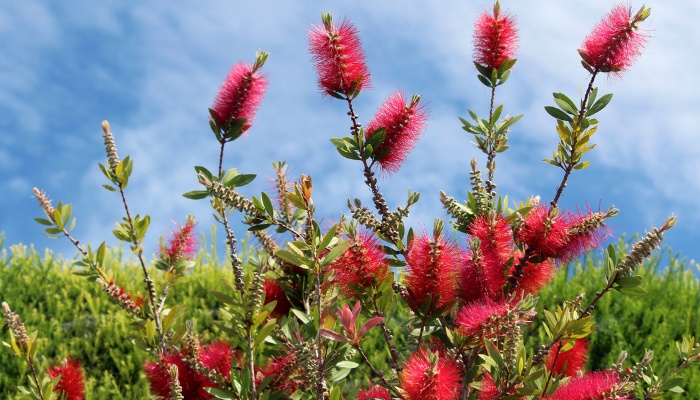
Besides the unique and spiky shape of its flowers, bottlebrush bushes also come in very vivid shades of red. It’s an ideal plant to add an exotic flare to the garden and as a backdrop to the lemon tree.
- Key benefits: Ornamental, attracts pollinators
- Light requirements: Full sun
- Average size: 5-25 feet tall, 5-20 feet wide depending on how you train it
- Bloom time: Spring, summer
9. Purple Coneflowers

With flowers that look like daisies but with pink to purple petals that slope downward, these plants attract bees and butterflies, which also pollinate the lemon tree.
- Key benefits: Attracts pollinators
- Light requirements: Full sun, partial shade
- Average size: 2-5 feet tall, 1-2 feet wide
- Bloom time: Summer
10. Black-Eyed Susans
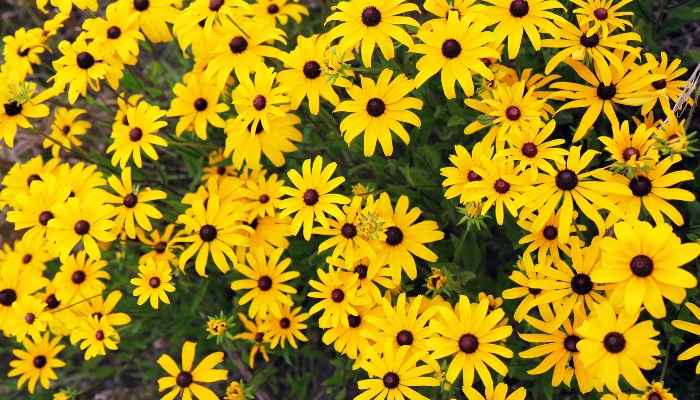
Black-eyed Susans are another daisy-like flowering plant but with a black disc instead of the yellow center of the daisy flowers. They also attract pollinators.
- Key benefits: Attract pollinators
- Light requirements: Full sun
- Average size: 2-3 feet tall, 1-2 feet wide
- Bloom time: Summer, fall
11. Comfrey
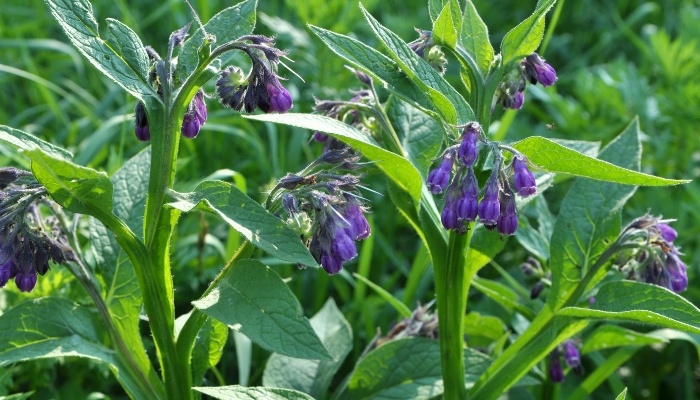
Comfrey is a medicinal plant that has been used to treat skin wounds, aching joints, and inflammation. The combination of light green leaves and purple flowers makes them a great addition to your flower bed.
- Key benefits: Ornamental and medicinal properties, nutrient-dense leaves can be used as mulch for plants
- Light requirements: Full sun, partial shade
- Average size: 12-36 inches tall, 9-30 inches wide
- Bloom time: Spring
Final Thoughts
Whether you’re planting edible or ornamental plants, you can always find good candidates to pair with the lemon tree.
The accommodating tree doesn’t overcrowd the companion plants and can provide them with partial shade in hot summer afternoons. The companion plants attract pollinators and good bugs that protect the lemon tree against pests.
